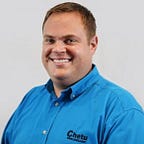Augmenting Patient Care with Software as a Medical Device
In the healthcare industry’s shift to outcome-based care models, providers focusing on long-term patient success and effective treatments tracked over time have relied heavily on technology to implement this plan. Utilizing software-driven resources, providers are employing wearable medical devices to monitor and evaluate patient care in unprecedented ways. Wearable medical devices have seen significant growth in market valuation, with Fortune Business Insights reporting a global market share of $512 billion for 2022.
The industry has shown its willingness to embrace software-based solutions to complex challenges. While chilling statistics remain, such as the U.S. leading all countries in healthcare spending, Americans still express dissatisfaction with their healthcare. Officials continue effective partnerships with developers, who are willing to assist with mitigating these persisting, complex challenges by deploying new tech resources implemented within the healthcare industry.
Software as a Medical Device: A Proactive, New Approach
The U.S. healthcare industry remains the global expense leader, often hindering new strategies because of budget constraints. Medical equipment, staffing, and insurance premiums are a few factors responsible for bloated healthcare costs and expenses. The American Hospital Association reported a 17.5% increase in hospital expenses from 2019–2022. This reinforces a need to reevaluate expenses incurred, and present new tech-based solutions to reduce costs associated with equipment used in medical treatment.
Software as a Medical Device (SaMD) is a new addition to the burgeoning global Medtech market, forecasted by Statista to reach $600 billion by 2024. SaMD offers advantages to healthcare institutions seeking to deliver quality care but reduce expenses associated with traditional equipment. SaMD enables expedient and accurate patient diagnoses.
Coupled with powerful predictive analytics driven by Artificial Intelligence, providers can view detailed reports forecasting future patient outcomes and real-time responses to currently implemented treatment plans. Predictive analytics can proactively measure something as crucial as a patient’s heart condition, enabling medical providers with additional time to prepare for cardiac-based issues and treat them before symptoms appear instead of engaging in reactive treatment once cardiac arrest has already begun.
Dedicated software developers’ augmentation of predictive analysis has come far, with impressive and proven results when deployed across multiple industries. SaMD remains a unique resource because its functionality is not exclusively reliant on medical hardware equipment. Often referred to as a stand-alone resource, SaMD is fully capable of monitoring patients, recording pertinent data, and implementing treatment plans.
Compliance amid Innovation
The advent of any new tech resource seeking to innovate will always be subjected to some scrutiny and regulation. The healthcare industry must strictly adhere to HIPAA and HL7 protocols, universal standards for privacy, and patient care. When the healthcare industry became more infused with cutting-edge, software-based resources, advocates and officials were compelled to reevaluate compliance standards.
Telemedicine is an innovative method that connects patients with providers and delivers individualized treatment plans. Its success has been predicated on tech resources seamlessly connecting patients with providers and efficiently sharing critical patient data. Software developers successfully designed and enhanced Electronic Health Record (EHR) platforms to adhere to stringent HL7 protocols, facilitate interoperability, and streamline healthcare provider operations.
Within the innovative landscape of SaMD, the U.S. Food and Drug Administration has recognized its value. Still, for anyone seeking information on new regulatory protocols, the administration has referred inquiries to The International Medical Device Regulators Forum, where several international members collaborate with the U.S. to discuss SaMD trends and ensure compliance while adhering to each state, federal, and international protocol.
Partnerships Modernize Healthcare
Successful deployment of tech resources to optimize any industry is always crucial to create a better future with more streamlined processes. Available resources provide opportunities for optimization, but facilitating effective partnerships ensures proper and customized deployment of software-based solutions to address industry-specific challenges.
Telemedicine’s post-pandemic sustainability has reinforced the healthcare industry’s commitment to individualized treatment plans delivered in modern ways; remotely and more collaboratively amongst patients and multiple healthcare providers.
SaMD’s application within the healthcare industry enables another method of care delivery. When enhanced by expert-level software developers, it adds another layer of modernity to an industry that continues working to reduce expenses, elevate patient care, and provide individualized treatment plans to meet outcome-based health plan benchmarks.
Originally published at https://www.chetu.com.
